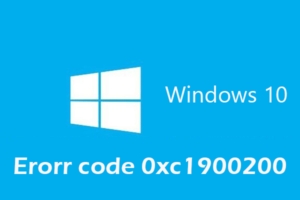-
Table of Contents
“In Windows 11, navigating the blurred line between legitimate and adware.”
In Windows 11, the line between legitimate software and adware is becoming increasingly blurred.
The Impact of Adware on User Experience in Windows 11
In the digital age, adware has become an unfortunate reality for many users. These intrusive advertisements can disrupt the user experience, slow down system performance, and even compromise the security of a device. With the release of Windows 11, however, the line between legitimate software and adware seems to be increasingly blurred. This article will explore the impact of adware on user experience in Windows 11, analyzing the potential consequences and offering insights into how users can protect themselves.
One of the most noticeable changes in Windows 11 is the increased integration of advertisements within the operating system. Microsoft has introduced a new feature called “Windows Spotlight,” which displays personalized ads on the lock screen. While this may seem like a harmless addition, it can be quite intrusive for users who prefer a clean and ad-free interface. Furthermore, these ads can consume valuable system resources, leading to slower performance and reduced productivity.
Another concerning aspect of adware in Windows 11 is the inclusion of pre-installed apps that display advertisements. These apps, often referred to as “bloatware,” come bundled with the operating system and can be difficult to remove. Not only do they clutter the system, but they also generate revenue for the developers through the display of ads. This creates a conflict of interest, as the user’s experience is compromised for the sake of generating profit.
Moreover, the increasing prevalence of adware in Windows 11 raises concerns about privacy and data security. Many ad-supported apps collect user data to deliver targeted advertisements. While this may seem like a harmless trade-off, it can expose users to potential privacy breaches and data leaks. Additionally, the constant tracking and profiling of users’ online activities can feel invasive and intrusive, eroding trust in the operating system.
To mitigate the impact of adware on user experience in Windows 11, there are several steps that users can take. Firstly, it is essential to be vigilant during the installation process and carefully review the terms and conditions. Often, adware is bundled with legitimate software, and users unknowingly agree to its installation. By reading the fine print and opting out of any additional software, users can avoid unnecessary adware.
Furthermore, users should regularly review and uninstall any unnecessary apps or programs that display advertisements. This can be done through the Windows Settings menu or by using third-party uninstaller tools. By removing bloatware, users can reclaim valuable system resources and enjoy a cleaner, more streamlined experience.
Additionally, it is crucial to invest in reliable antivirus software that includes adware detection and removal capabilities. These tools can scan the system for any potentially unwanted programs and eliminate them before they cause any harm. Regularly updating the antivirus software ensures that it stays up-to-date with the latest adware threats.
In conclusion, the increasing integration of adware in Windows 11 has significant implications for user experience. The intrusive nature of these advertisements, coupled with their impact on system performance and privacy, can be frustrating and concerning for users. However, by remaining vigilant during the installation process, regularly reviewing and uninstalling unnecessary apps, and investing in reliable antivirus software, users can protect themselves from the negative effects of adware. Ultimately, it is crucial for Microsoft to strike a balance between generating revenue and providing a seamless user experience in future updates of Windows 11.
Identifying and Removing Adware in Windows 11
In the digital age, adware has become an unfortunate reality for many computer users. These intrusive advertisements can disrupt our online experience, slow down our devices, and even compromise our privacy. With the release of Windows 11, Microsoft’s latest operating system, the line between legitimate software and adware has become increasingly blurred. In this article, we will explore the challenges of identifying and removing adware in Windows 11, and provide some tips to help users protect their systems.
One of the main reasons why adware has become more difficult to identify in Windows 11 is the increasing sophistication of its creators. Adware developers have become adept at disguising their software as legitimate programs, making it harder for users to distinguish between the two. They often bundle their adware with popular free software, tricking users into unknowingly installing it alongside the desired program. This practice, known as “bundling,” has become a common tactic employed by adware developers.
To make matters worse, adware in Windows 11 has also evolved to evade detection by traditional antivirus software. It can now hide itself deep within the operating system, making it harder to detect and remove. This means that even if you have a reliable antivirus program installed, it may not be enough to protect you from adware.
So, how can you identify and remove adware in Windows 11? The first step is to be vigilant when installing new software. Always read the terms and conditions and be wary of any additional programs that may be bundled with the software you want to install. If you see any checkboxes pre-selected for additional software, make sure to uncheck them before proceeding with the installation.
Another important step is to regularly scan your system for adware. While traditional antivirus software may not be able to detect all adware, there are specialized tools available that can help. Adware removal tools, such as Malwarebytes or AdwCleaner, can scan your system for known adware and remove it. These tools are often more effective at detecting and removing adware than traditional antivirus software.
In addition to using specialized tools, it is also important to keep your operating system and software up to date. Adware developers often exploit vulnerabilities in outdated software to gain access to your system. By regularly updating your software, you can patch these vulnerabilities and reduce the risk of adware infections.
If you suspect that your system is infected with adware, there are a few telltale signs to look out for. These include an excessive number of pop-up ads, browser redirects, and a noticeable decrease in system performance. If you experience any of these symptoms, it is important to take action immediately to prevent further damage to your system.
In conclusion, the line between legitimate software and adware has become increasingly blurred in Windows 11. Adware developers have become more sophisticated in their tactics, making it harder for users to identify and remove adware. However, by being vigilant during software installations, regularly scanning your system for adware, and keeping your software up to date, you can protect yourself from these intrusive advertisements. Remember, prevention is always better than cure when it comes to adware.
Protecting Your Privacy in Windows 11: Dealing with Adware
In Windows 11, the line between legitimate software and adware is becoming increasingly blurred, posing a significant challenge for users concerned about their privacy. Adware, a type of software that displays unwanted advertisements, has been a persistent issue for Windows users for years. However, with the release of Windows 11, the problem seems to have escalated.
One of the primary reasons for this blurring of lines is the integration of advertising within the operating system itself. Windows 11 introduces a new feature called “Windows Spotlight,” which displays personalized advertisements on the lock screen. While Microsoft claims that these ads are tailored to the user’s interests, many users find them intrusive and unwanted. This integration of advertising within the operating system raises concerns about the extent to which Microsoft is prioritizing user privacy.
Another factor contributing to the blurring of lines is the increasing sophistication of adware. Adware developers are constantly finding new ways to bypass security measures and infiltrate users’ systems. They often disguise their software as legitimate programs, making it difficult for users to distinguish between safe and potentially harmful applications. This deceptive tactic puts users at risk of unknowingly installing adware on their devices, compromising their privacy and security.
To protect your privacy in Windows 11 and deal with adware effectively, it is crucial to adopt a proactive approach. First and foremost, it is essential to keep your operating system and all installed applications up to date. Software updates often include security patches that address vulnerabilities exploited by adware developers. By regularly updating your system, you can minimize the risk of adware infiltrating your device.
Additionally, it is advisable to exercise caution when downloading and installing software from the internet. Stick to reputable sources and avoid downloading applications from unfamiliar or suspicious websites. Always read user reviews and check for any red flags before proceeding with the installation. Taking these precautions can significantly reduce the likelihood of inadvertently installing adware on your system.
Furthermore, investing in a reliable antivirus program is crucial for protecting your privacy in Windows 11. Antivirus software can detect and remove adware, as well as provide real-time protection against potential threats. Ensure that your antivirus program is regularly updated to stay ahead of the ever-evolving adware landscape.
In Windows 11, it is also important to be mindful of the permissions you grant to applications. Adware often relies on user permissions to access personal data and display targeted advertisements. Take the time to review the permissions requested by each application and consider whether they are necessary. Limiting the permissions granted to applications can help mitigate the risk of adware collecting and exploiting your personal information.
Lastly, if you suspect that your device has been infected with adware, it is crucial to take immediate action. Run a thorough scan with your antivirus software to detect and remove any malicious programs. Additionally, consider using specialized adware removal tools that can specifically target and eliminate adware from your system.
In conclusion, the line between legitimate software and adware in Windows 11 is becoming increasingly blurred, posing a significant challenge for users concerned about their privacy. To protect your privacy effectively, it is crucial to adopt a proactive approach by keeping your system updated, exercising caution when downloading software, investing in reliable antivirus software, being mindful of permissions, and taking immediate action if adware is suspected. By implementing these measures, users can navigate the complex landscape of adware and safeguard their privacy in Windows 11.
Adware vs Legitimate Software: Navigating the Fine Line in Windows 11
In the world of technology, the line between legitimate software and adware has always been a topic of debate. With the release of Windows 11, this line becomes increasingly blurred, posing challenges for users who want to ensure the security and integrity of their systems.
Adware, short for advertising-supported software, is a type of software that displays advertisements on a user’s computer. While some adware is harmless and simply displays ads, others can be intrusive and even malicious, causing unwanted pop-ups, redirecting web browsers, or collecting personal information without consent. Legitimate software, on the other hand, refers to software that is developed and distributed by reputable companies, adhering to ethical practices and providing value to users.
One of the reasons why the line between adware and legitimate software becomes blurred in Windows 11 is the increasing prevalence of bundled software. Bundled software refers to additional programs that are included with the installation of a main software package. While some bundled software is legitimate and provides additional functionality, others may contain adware or potentially unwanted programs (PUPs).
The challenge for users lies in distinguishing between legitimate bundled software and adware. Often, during the installation process, users are presented with a series of checkboxes or prompts that ask if they want to install additional software. These prompts can be confusing, and users may inadvertently agree to install adware without realizing it. This is where the line between legitimate and adware becomes hazy, as users may unknowingly install adware while installing what they believe to be legitimate software.
Another factor that contributes to the blurring of this line is the increasing sophistication of adware. Adware developers are constantly finding new ways to make their software appear legitimate and evade detection by antivirus programs. They may use techniques such as obfuscation or encryption to hide their malicious code, making it difficult for users to identify and remove adware from their systems.
Furthermore, adware developers often employ deceptive tactics to trick users into installing their software. They may use misleading advertisements or fake download buttons on websites, leading users to believe they are downloading legitimate software when, in fact, they are installing adware. This further complicates the task of distinguishing between legitimate software and adware, as users may be lured into installing adware without realizing it.
To navigate this fine line in Windows 11, users need to exercise caution and be vigilant during the installation process. It is important to carefully read all prompts and checkboxes, ensuring that only the desired software is being installed. Additionally, users should be wary of downloading software from untrusted sources or clicking on suspicious advertisements or download buttons.
Using reputable antivirus software can also help in identifying and removing adware from Windows 11 systems. Antivirus programs are designed to detect and remove malicious software, including adware. Regularly scanning the system for adware and keeping the antivirus software up to date can help ensure the security and integrity of the system.
In conclusion, the line between legitimate software and adware becomes increasingly blurred in Windows 11. The prevalence of bundled software and the sophistication of adware pose challenges for users who want to protect their systems from unwanted and potentially harmful software. By exercising caution during the installation process, being vigilant while browsing the internet, and using reputable antivirus software, users can navigate this fine line and ensure the security of their Windows 11 systems.
Enhancing Security Measures to Combat Adware in Windows 11
In the ever-evolving landscape of technology, the battle against adware has become a constant struggle for both users and operating system developers. With the release of Windows 11, Microsoft has made significant efforts to enhance security measures and combat the growing threat of adware. However, as the line between legitimate software and adware becomes increasingly blurred, users must remain vigilant in protecting their systems.
One of the key security enhancements in Windows 11 is the introduction of Microsoft Defender Antivirus as the default antivirus solution. This built-in security feature provides real-time protection against malware, including adware. With its improved scanning capabilities and advanced threat detection algorithms, Microsoft Defender Antivirus aims to identify and remove adware before it can cause any harm.
Furthermore, Windows 11 introduces a new feature called “SmartScreen” that helps protect users from potentially malicious websites and downloads. SmartScreen analyzes websites and files for any signs of adware or other harmful content, providing a warning to users if it detects any suspicious activity. This proactive approach empowers users to make informed decisions and avoid inadvertently installing adware on their systems.
To further enhance security, Windows 11 includes a revamped Windows Firewall. This firewall monitors incoming and outgoing network traffic, blocking any unauthorized connections and preventing adware from communicating with its command and control servers. By strengthening the firewall, Microsoft aims to create a robust defense against adware and other malicious software.
In addition to these built-in security measures, Windows 11 also emphasizes the importance of user education and awareness. The operating system includes a comprehensive set of security settings that allow users to customize their security preferences and control the types of applications that can access their system. By empowering users to make informed decisions about the software they install, Windows 11 aims to reduce the risk of adware infiltrating the system.
Despite these efforts, the line between legitimate software and adware continues to blur. Adware developers have become increasingly sophisticated in their tactics, often disguising their software as legitimate applications or bundling it with other software downloads. This makes it challenging for both users and operating system developers to distinguish between genuine software and potentially harmful adware.
To address this challenge, Windows 11 incorporates machine learning algorithms that analyze the behavior of software to determine its legitimacy. By monitoring factors such as resource usage, network activity, and user interactions, these algorithms can identify suspicious patterns and flag potentially harmful software. This proactive approach helps Windows 11 stay one step ahead of adware developers and provides users with an additional layer of protection.
In conclusion, Windows 11 introduces several security enhancements to combat the growing threat of adware. With features such as Microsoft Defender Antivirus, SmartScreen, and an improved Windows Firewall, the operating system aims to provide users with robust protection against adware and other malicious software. However, as the line between legitimate software and adware becomes increasingly blurred, users must remain vigilant and exercise caution when installing new applications. By combining advanced security measures with user education and awareness, Windows 11 strives to create a safer computing environment for its users.
Q&A
1. What is adware?
Adware refers to software that displays unwanted advertisements on a user’s device, often without their consent.
2. How does Windows 11 blur the line between legitimate software and adware?
Windows 11 introduces new features and changes that may make it harder to distinguish between legitimate software and potentially unwanted adware.
3. What are some examples of features in Windows 11 that blur this line?
Windows 11 includes a redesigned Microsoft Store that allows for more types of apps, potentially increasing the risk of adware being distributed through the store. Additionally, changes to the Start menu and taskbar may make it easier for adware to mimic legitimate software.
4. What are the risks associated with adware?
Adware can negatively impact user experience by displaying intrusive ads, slowing down system performance, and potentially compromising user privacy and security.
5. How can users protect themselves from adware on Windows 11?
Users can protect themselves by being cautious when downloading and installing software, using reputable antivirus software, regularly updating their operating system and applications, and being mindful of the permissions and settings they grant to apps.In Windows 11, the line between legitimate software and adware becomes increasingly blurred.







![[Solved]: “Error Code 0xC004F050” in Windows 11 in No Time](https://www.tipsbin.net/wp-content/uploads/2023/08/8e64f519d2390bfc001a41744be2cbd4-300x199.jpeg)

